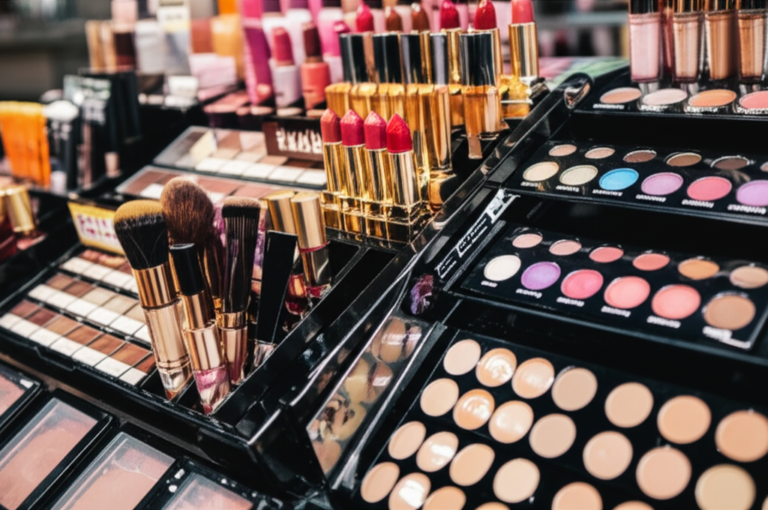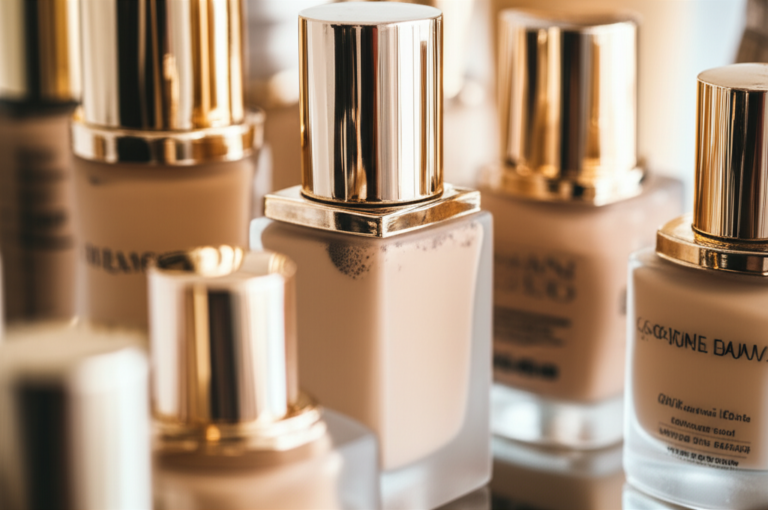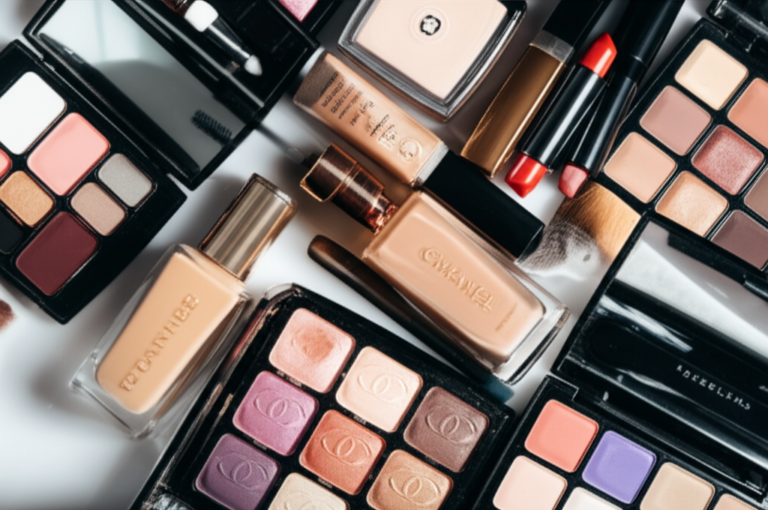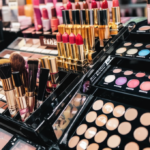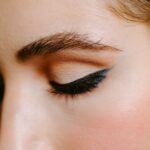Support our educational content for free when you purchase through links on our site. Learn more
How Often Should You Replace Makeup? 9 Must-Know Rules for 2025 🕒
Ever wondered if that favorite foundation lurking in your makeup bag is still safe to use? Or if your trusty mascara might be secretly harboring bacteria ready to cause an eye infection? You’re not alone! At Makeup Brands™, we’ve seen countless clients unknowingly cling to expired products, leading to breakouts, irritation, and worse. Did you know that mascara should be replaced every 3 months to avoid bacterial buildup? Spoiler alert: many other products have their own ticking clocks, and ignoring them can turn your beauty routine into a health hazard.
In this ultimate guide, we’ll reveal how often you should replace every makeup product—from lipsticks to brushes—and share expert tips on cleaning and storage to keep your skin glowing and germ-free. Plus, we’ll dive into the surprising signs your makeup has gone bad and how to shop smart for long-lasting, hygienic products. Ready to refresh your routine and protect your skin? Let’s dive in!
Key Takeaways
- Replace mascara and liquid eyeliners every 3 months to prevent eye infections.
- Foundations and concealers last 6-12 months, depending on formula and packaging.
- Powder products like blush and bronzer can last up to 24 months if stored properly.
- Makeup sponges (e.g., Beautyblender) should be replaced every 3-6 months, even with regular cleaning.
- Watch for signs like funky smells, texture changes, and color shifts as red flags for expired makeup.
- Store makeup in cool, dry places away from bathroom humidity to extend shelf life.
- Use hygienic packaging (pumps, tubes) and tools like spatulas to minimize contamination.
Curious about which products top our freshness charts or how to spot sneaky bacteria buildup? Keep reading to become a makeup replacement pro!
Table of Contents
- ⚡️ Quick Tips and Facts on Makeup Product Replacement
- 🧴 The Dirty Truth: Why Makeup Expiration and Hygiene Matter
- 1. How Often Should You Replace Your Makeup Products? A Comprehensive Guide
- 1.1. Foundations and Concealers: Shelf Life and Safety
- 1.2. Lipsticks and Lip Glosses: When to Toss Your Pout’s Best Friend
- 1.3. Eye Makeup: Mascara, Eyeliner, and Eyeshadow Replacement Timelines
- 1.4. Powder Products: Blush, Bronzer, and Setting Powder Lifespan
- 1.5. Makeup Brushes and Sponges: Cleaning vs. Replacing
- 🦠 Bacteria Beware: How Old Makeup Can Harm Your Skin
- 🔍 Spotting the Signs: When Your Makeup Has Gone Bad
- 🧼 Expert Tips: How to Properly Clean and Store Your Makeup Products
- 💡 Pro Secrets: Extending the Life of Your Favorite Makeup
- 📦 Your Makeup Bag Essentials: What to Replace and When
- 🛒 Shopping Smart: Choosing Long-Lasting and Hygienic Makeup Brands
- 💬 Common Questions Answered: Makeup Product Replacement FAQ
- 🔗 Recommended Links for Makeup Hygiene and Safety
- 📚 Reference Links and Trusted Sources
- 🎯 Conclusion: Keep It Fresh, Keep It Fabulous!
⚡️ Quick Tips and Facts on Makeup Product Replacement
Welcome to the Makeup Brands™ studio! Let’s get one thing straight: your face is a masterpiece, not a science experiment. 🎨 Using expired makeup is like painting a Rembrandt with spoiled milk—it’s just not going to end well. Before we dive deep into the nitty-gritty of cosmetic chemistry and microbiology (don’t worry, we’ll make it fun!), here are the fast facts you need to know. Think of this as your cheat sheet to a clean and safe makeup routine. And if you’re looking for the best products to start your fresh collection with, check out our guide to the top 5 makeup products that are worth every penny.
Here’s a quick breakdown of when to say “bye-bye” to your beauty buys:
| Makeup Product | Recommended Replacement Time | Why It’s a Big Deal |
|---|---|---|
| Mascara & Liquid Eyeliner | 3 months | The dark, wet tube is a breeding ground for bacteria. Risk of eye infections is extremely high! |
| Liquid Foundation & Concealer | 6-12 months | Bacteria can thrive in the liquid formula, leading to breakouts and irritation. |
| Cream Blush & Eyeshadow | 6-12 months | Dipping your fingers or brushes in repeatedly introduces germs. |
| Lipstick & Lip Gloss | 12 months | Constant contact with your mouth makes sharing and prolonged use a no-go. |
| Powder Products (Blush, Bronzer) | 12-24 months | Powders are drier and less prone to bacteria, but oils from your skin can still cause issues. |
| Pencil Eyeliner & Lip Liner | 12-24 months | Pro-Tip: Regular sharpening removes the top layer, keeping them fresher for longer. |
| Makeup Sponges (e.g., Beautyblender) | 3-6 months | These are porous and hold onto moisture, dead skin, and bacteria. Non-negotiable! |
Key Facts to Remember:
- ✅ The PAO Symbol: Look for a tiny open jar icon on your product’s packaging. The number inside (e.g., “6M,” “12M”) tells you how many months the product is good for after opening.
- ❌ Don’t Trust Your Nose (Alone): While a funky smell is a dead giveaway, some products can go bad without any obvious odor.
- 💧 Moisture is the Enemy: Liquid and cream products have a shorter shelf life because the water content encourages bacterial growth.
- 👀 Eye Safety First: The area around your eyes is incredibly delicate. As one source notes, mascara and liquid eyeliner should be replaced every 3 months because they are used near the eyes, making them prone to bacterial growth.
🧴 The Dirty Truth: Why Makeup Expiration and Hygiene Matter
Alright, let’s have a heart-to-heart. Imagine your favorite, go-to liquid foundation. You love it, right? It makes your skin look flawless. Now, imagine it’s a tiny, bustling metropolis for bacteria. Less glamorous, huh? Every time you dip a finger, brush, or sponge into that bottle, you’re introducing new “residents.” These microscopic squatters thrive in the moist, nutrient-rich environment of your foundation, concealer, and cream blushes.
This isn’t just a scare tactic; it’s science! The preservatives in makeup are designed to fight off germs, but they break down over time. Once their defenses are down, things can get ugly. We’re talking about potential breakouts, skin irritation, and even nasty infections like conjunctivitis (pink eye) or staph infections. It’s a crucial topic in the Cosmetics Industry that we take very seriously.
One of our estheticians, Chloe, once had a client who couldn’t figure out why she kept getting persistent acne on her right cheek. After a thorough consultation, Chloe discovered the culprit: a two-year-old cream blush the client applied with her fingers every single day. Once she tossed the blush and switched to a new powder formula, her skin cleared up within weeks! This is a classic case of acne cosmetica, a type of acne triggered by pore-clogging ingredients in old or improperly stored makeup.
The bottom line is that using expired makeup isn’t just about getting a patchy application; it’s a genuine health risk. As the experts at Beautyblender point out, “The longer you use a beautyblender, the more bacteria it can harbor,” which “can lead to breakouts and skin irritation.” Your skin is your largest organ—let’s treat it with the respect it deserves!
1. How Often Should You Replace Your Makeup Products? A Comprehensive Guide
So, you’re ready to do a full makeup bag audit? Fantastic! We’re here to guide you through every bottle, tube, and compact. Let’s break it down by category.
1.1. Foundations and Concealers: Shelf Life and Safety
Your base makeup is the canvas for everything else, so you want it to be pristine. The lifespan of your foundation and concealer depends heavily on its formula.
- Liquid and Cream Formulas: These are your high-maintenance friends. Because of their water content, they are more susceptible to bacterial growth. The golden rule is 6 to 12 months. If you’re using a product in a jar that you dip your fingers into, consider replacing it closer to the 6-month mark. Products with a pump, like the iconic Fenty Beauty Pro Filt’r Soft Matte Longwear Foundation, are more hygienic and can last closer to a year.
- Powder Formulas: These are more low-key. With no water, there’s less of a party for bacteria. You can typically keep powder foundations for up to 2 years. However, you must keep your brushes clean! Transferring oils from your face back into the compact can cause a hard film (known as “hardpan”) to form on the surface.
Top Picks for a Fresh Start:
- Fenty Beauty Pro Filt’r Soft Matte Longwear Foundation: Amazon | Fenty Beauty Official Website
- NARS Radiant Creamy Concealer: Amazon | Walmart | NARS Official Website
1.2. Lipsticks and Lip Glosses: When to Toss Your Pout’s Best Friend
We all have that one lipstick that makes us feel invincible. But even superheroes have a shelf life. Because they come in direct contact with your mouth, lip products should be replaced every 12 months. If you’ve been sick, especially with a cold sore, you should toss any lip product you used immediately to prevent reinfection.
- Lipsticks: A change in texture (becoming dry or crumbly) or a waxy smell means it’s time to go.
- Lip Glosses: If the formula becomes goopy, separates, or the color changes, it’s past its prime. The wand applicator is also a major bacteria magnet.
Pucker Up with These Favorites:
- MAC Cosmetics Matte Lipstick: Amazon | Walmart | MAC Official Website
- Fenty Beauty Gloss Bomb Universal Lip Luminizer: Amazon | Fenty Beauty Official Website
1.3. Eye Makeup: Mascara, Eyeliner, and Eyeshadow Replacement Timelines
Pay close attention—this is the most important section for your health! The eye area is a direct gateway for bacteria to cause some serious problems.
- Mascara and Liquid Eyeliner: This is a strict, non-negotiable 3-month rule. Every time you pull out the wand and put it back in, you’re pushing air and bacteria into that dark, wet tube—creating the perfect incubator. Never, ever share these products. It’s just not worth the risk of a nasty eye infection.
- Pencil Eyeliner: These can last up to 2 years because you can literally shave away the surface layer of bacteria every time you sharpen them.
- Eyeshadows: Powder eyeshadows are similar to other powder products and can last for 12-24 months. Cream eyeshadows, however, follow the 6-12 month rule.
Eye-Catching Essentials:
- Too Faced Better Than Sex Volumizing Mascara: Amazon | Walmart | Too Faced Official Website
- Stila Stay All Day Waterproof Liquid Eye Liner: Amazon | Walmart | Stila Official Website
- Urban Decay Naked Palettes: Amazon | Walmart | Urban Decay Official Website
1.4. Powder Products: Blush, Bronzer, and Setting Powder Lifespan
Powder products are the marathon runners of your makeup bag. Thanks to their dry composition, they can last for 12 to 24 months. The biggest threat to their longevity is the oil and moisture from your skin, transferred via your brushes. This can create that dreaded “hardpan,” a hard film over the top of the powder that makes it impossible to pick up any product. If you see this, you can gently scrape the top layer off with a clean spoolie or knife, but if it keeps coming back, it might be time for a replacement.
Our Powder Room Picks:
- NARS Blush: Amazon | Walmart | NARS Official Website
- Laura Mercier Translucent Loose Setting Powder: Amazon | Walmart | Laura Mercier Official Website
1.5. Makeup Brushes and Sponges: Cleaning vs. Replacing
Your tools are just as important as your makeup! Let’s settle the debate on cleaning versus replacing.
- Makeup Sponges: We’re looking at you, Beautyblender. These amazing tools give a flawless finish, but they are also porous sponges that soak up makeup, dead skin cells, and bacteria. Cleaning them after every use is non-negotiable. But even with diligent cleaning, you must replace them. As Beautyblender themselves state, “The general rule of thumb is to replace your beautyblender every 3-6 months.“
- Makeup Brushes: High-quality brushes are an investment and can last for years if you care for them properly. This means regular washing. One guide suggests washing foundation and concealer brushes weekly, while eye brushes should be cleaned every 1-2 weeks.
Tool Kit Must-Haves:
- The Original Beautyblender: Amazon | Walmart | Beautyblender Official Website
- Cinema Secrets Makeup Brush Cleaner: Amazon | Walmart | Cinema Secrets Official Website
🦠 Bacteria Beware: How Old Makeup Can Harm Your Skin
We’ve hinted at the dangers, but let’s pull back the curtain entirely. What exactly is living in that expired foundation? It’s a cocktail of microorganisms you’d rather not have on your face, including Staphylococcus, Streptococcus, and E. coli. When you apply contaminated makeup, you’re essentially giving these germs a free pass to your pores and delicate mucous membranes.
This can lead to a host of unpleasant skin conditions:
- Contact Dermatitis: An itchy, red rash caused by an allergic reaction to expired ingredients or the bacteria themselves.
- Acne Cosmetica: As we mentioned earlier, this is acne specifically caused by clogged pores from makeup. Old, separated foundation is a prime culprit.
- Folliculitis: An infection of the hair follicles that looks like a sudden breakout of small, red bumps or white-headed pimples.
- Eye Infections: This is the most serious risk. Contaminated mascara or eyeliner can lead to painful and potentially vision-damaging infections like conjunctivitis (pink eye) or a stye.
Think of it this way: you wouldn’t eat food that’s past its expiration date, right? Applying expired makeup to your skin is the same principle. You’re risking your health for a product that isn’t even performing at its best anymore. For more expert advice on skin health, explore our Beauty Tips.
🔍 Spotting the Signs: When Your Makeup Has Gone Bad
Beyond the calendar, your senses are your best detectives for sniffing out expired products. Your makeup will often give you clear signals that it’s time to part ways. Here’s what to look (and smell) for:
| Sign | What It Means | What to Do |
|---|---|---|
| 👃 A Funky Smell | The product has likely gone rancid due to bacterial growth or expired oils. It might smell waxy, sour, or just “off.” | Toss it immediately! ❌ |
| 🎨 Color Change | The pigments have oxidized or the formula has started to break down. Your perfect nude lipstick is now a weird shade of orange. | Toss it! ❌ |
| 💧 Texture Shift | Liquid foundation is separating, mascara is clumpy and dry, or cream blush feels greasy or chalky. | Toss it! ❌ |
| ✨ Poor Performance | Eyeshadow has no color payoff, foundation applies patchily, or eyeliner crumbles upon application. | Toss it! ❌ |
| ⚪ White or Black Spots | This could be mold. Yes, MOLD. This is especially common in sponges and products stored in damp bathrooms. | Toss it immediately and disinfect the storage area! ❌ |
For tools like a Beautyblender, the signs are more physical. Look for changes in texture—if it “starts to feel harder or less bouncy, it’s a sign that it’s time for a new one.” Also, if you see any “cracks or tears,” it’s time to toss it, as those crevices are impossible to clean properly.
🧼 Expert Tips: How to Properly Clean and Store Your Makeup Products
You can’t stop time, but you can slow down the degradation of your makeup with proper care. A little TLC goes a long way in keeping your products safe and effective.
Cleaning Your Tools: A Step-by-Step Guide
For Brushes:
- Wet the Bristles: Use lukewarm water and point the bristles downward to avoid getting water in the ferrule (the metal part), which can loosen the glue over time.
- Lather Up: Place a drop of gentle cleanser (mild shampoo or a dedicated brush cleanser) into the palm of your hand.
- Swirl and Massage: Gently swirl the brush tip in the cleanser, working up a lather.
- Rinse Thoroughly: Rinse under lukewarm water until the water runs clear.
- Squeeze and Reshape: Gently squeeze out excess water with a clean towel, reshape the bristles, and lay the brush flat to dry with the bristles hanging off the edge of a counter.
For Sponges (like the Beautyblender):
Beautyblender recommends cleaning your sponge after every use for the best results.
- Wet: Saturate your sponge with water. It will expand to its full size.
- Lather: Apply a generous amount of a cleanser like the Beautyblender Solid Cleanser or Liquid Blendercleanser.
- Squeeze and Rinse: Work the cleanser in by squeezing and massaging the sponge. Rinse and squeeze repeatedly until the water runs clear and all suds are gone.
- Air Dry: Squeeze out all excess water and let it air dry in a well-ventilated area.
Smart Storage Solutions
Where you store your makeup is just as important as how you clean it. The number one rule: get your makeup bag out of the bathroom! The constant heat and humidity from your shower create a tropical paradise for mold and bacteria.
- ✅ Do: Store your makeup in a cool, dry place like a vanity drawer or a dedicated storage container in your bedroom.
- ✅ Do: Make sure all lids and caps are screwed on tightly to keep air and germs out.
- ❌ Don’t: Store products in direct sunlight, as heat can break down preservatives and alter formulas.
- ❌ Don’t: Keep makeup in a hot car. It’s a recipe for melted lipsticks and separated foundations.
💡 Pro Secrets: Extending the Life of Your Favorite Makeup
Want to make your products last as long as safely possible? We’ve got a few tricks up our sleeves that we use in the studio every day.
- Use a Spatula: For products in jars (like cream moisturizers, eye creams, or foundations), never dip your fingers directly into the pot. Use a clean, metal spatula to scoop out the product you need. This prevents contamination of the entire jar.
- Stop Pumping Your Mascara: That pumping motion you think is loading the brush? It’s actually forcing air into the tube, which dries out the formula faster and introduces bacteria. Instead, gently swirl the wand inside the tube to pick up product.
- Sharpen Your Pencils: As mentioned, regularly sharpening your eye and lip pencils removes the exposed, potentially contaminated layer, revealing a fresh surface.
- Sanitize Your Powders: You can lightly mist your powder blushes, bronzers, and eyeshadows with a 70% isopropyl alcohol spray to kill surface bacteria. Let it air dry completely before using. This is a great trick for reviving powders that have developed “hardpan.”
- Label Everything: When you open a new product, use a fine-tipped permanent marker to write the date on the bottom. This takes the guesswork out of knowing when it’s time for a replacement.
Speaking of secrets, sometimes the issue isn’t just your makeup but how you care for your skin underneath. The first YouTube video embedded in this article has a fascinating take on body hygiene that might surprise you! And if you’re looking to replace items on a budget, our guides on Drugstore Makeup are a lifesaver.
📦 Your Makeup Bag Essentials: What to Replace and When
Feeling overwhelmed? Let’s simplify it. Here is a scannable guide to help you triage your makeup bag. Grab it now and let’s do a quick clean-out!
🚨 TOSS NOW (0-3 Months) 🚨
- Mascara: No excuses! If it’s been open for more than 3 months, it’s a goner.
- Liquid Eyeliner: Same rule as mascara. Protect your peepers!
- Acne Treatment Products: The active ingredients can lose their potency quickly.
🧐 REVIEW REGULARLY (3-12 Months) 🧐
- Makeup Sponges: Replace every 3-6 months.
- Liquid Foundation & Concealer: Check for changes in smell, color, or texture around the 6-month mark. Most last up to 12 months.
- Cream Blush & Eyeshadow: These can harbor bacteria from your fingers. Toss after 6-12 months.
- Lip Gloss: The wand is a bacteria trap. Say goodbye after a year.
💖 LONG-TERM LOVES (1-2+ Years) 💖
- Lipstick: Can last up to a year, sometimes longer if stored properly.
- Powder Products (Blush, Bronzer, Eyeshadow): These are your most durable products, lasting 12-24 months.
- Pencil Liners (Eye & Lip): With regular sharpening, these can last up to 2 years.
- Makeup Brushes: With proper, regular cleaning, your brushes can be with you for many years!
🛒 Shopping Smart: Choosing Long-Lasting and Hygienic Makeup Brands
A product’s hygiene starts with its design. When you’re shopping, paying attention to the packaging can make a huge difference in the longevity and safety of your makeup.
- Pumps and Tubes are Your Friends: Look for foundations, concealers, and primers in airtight pumps or squeeze tubes. This type of packaging prevents air and bacteria from your fingers from contaminating the bulk of the product. Brands like Fenty Beauty and Estée Lauder often use pump dispensers for their liquid foundations.
- Be Wary of Jars: While luxurious, products in open-mouthed jars are the least hygienic. If you love a product that comes in a jar, commit to using a sanitized spatula every single time.
- Dropper Bottles: Serums and some foundations that come with droppers are a good option, but be careful not to let the dropper touch your skin directly, as this can introduce bacteria back into the bottle.
- The “Clean Beauty” Conversation: Many consumers are turning to “clean” or “natural” Beauty Brands. While these products often avoid certain synthetic preservatives, it’s important to know that this can sometimes mean they have a shorter shelf life. Natural preservatives may not be as robust, so pay extra close attention to the PAO symbol and any changes in the product.
Ultimately, the smartest shopper is an informed one. Read labels, check for PAO symbols, and choose packaging that minimizes contamination. Your skin will thank you!
🎯 Conclusion: Keep It Fresh, Keep It Fabulous!
Phew! We’ve journeyed through the colorful world of makeup product replacement, hygiene, and safety. Here’s the takeaway: your skin deserves fresh, clean makeup—not a petri dish of bacteria masquerading as your favorite foundation or lipstick. Whether it’s the 3-month rule for mascara or the 6-12 month window for liquid foundations, sticking to these timelines is your best defense against breakouts, infections, and irritation.
Our expert team at Makeup Brands™ can’t stress enough the importance of regularly replacing your makeup sponges and brushes, especially porous tools like the iconic Beautyblender. While cleaning extends their life, sponges inevitably degrade and harbor bacteria, so swapping them out every 3-6 months is a must. As the Beautyblender brand advises, “Your skin will thank you for it!”
Remember Chloe’s story? That persistent cheek acne cleared up once the client ditched her ancient cream blush. That’s proof positive: old makeup can sabotage your skin’s health and your glow. So, don’t hesitate to toss products showing signs of wear, funky smells, or texture changes.
Finally, smart shopping matters. Opt for hygienic packaging like pumps and tubes, use spatulas for jars, and always store your makeup in cool, dry places away from bathroom humidity. Your products will last longer, and your skin will stay happier.
Now that you’re armed with knowledge, go forth and keep your makeup fresh, fabulous, and bacteria-free! Your skin—and your mirror selfie—will thank you. 😉
🔗 Recommended Links for Makeup Hygiene and Safety
Ready to refresh your collection? Here are some of our top picks and trusted resources to keep your makeup game strong and hygienic:
-
The Original Beautyblender:
Amazon | Walmart | Beautyblender Official Website -
Fenty Beauty Pro Filt’r Soft Matte Longwear Foundation:
Amazon | Fenty Beauty Official Website -
NARS Radiant Creamy Concealer:
Amazon | Walmart | NARS Official Website -
MAC Cosmetics Matte Lipstick:
Amazon | Walmart | MAC Official Website -
Too Faced Better Than Sex Volumizing Mascara:
Amazon | Walmart | Too Faced Official Website -
Cinema Secrets Makeup Brush Cleaner:
Amazon | Walmart | Cinema Secrets Official Website -
Books for Deeper Insight:
“Face Paint: The Story of Makeup” by Lisa Eldridge — Amazon
“Makeup Manual: For Everyone from Beginner to Professional” by Bobbi Brown — Amazon
💬 Common Questions Answered: Makeup Product Replacement FAQ
What are the risks of using old or contaminated cosmetics?
Using expired or contaminated makeup can lead to skin irritation, allergic reactions, breakouts (acne cosmetica), infections like conjunctivitis or styes, and even more serious bacterial infections such as folliculitis. The preservatives in makeup degrade over time, allowing bacteria and fungi to multiply. This can cause redness, itching, swelling, and discomfort. For eye products, the risk is especially high due to the sensitivity of the area.
Is it safe to share makeup products with others?
Short answer: No! Sharing makeup products, especially those applied near the eyes or lips, can transfer bacteria, viruses (like cold sores), and fungi between users. This increases the risk of infections and cross-contamination. If you must share, use disposable applicators and sanitize tools thoroughly between uses.
How can I properly store makeup to extend its shelf life?
Store makeup in a cool, dry place away from direct sunlight and humidity. Avoid bathrooms or areas with fluctuating temperatures. Keep lids and caps tightly closed to prevent air and bacteria from entering. Use airtight containers or organizers to protect your products. Label products with the date opened to track their lifespan.
What are the signs that my makeup products have expired?
Look for changes in smell (rancid, sour, or waxy odors), texture (clumping, separation, dryness, or greasiness), color (fading or discoloration), and performance (patchy application, poor pigmentation). Also, visible mold or white/black spots are a clear sign to discard immediately.
What are the best practices for cleaning makeup brushes and tools regularly?
Wash brushes weekly for foundation and concealer brushes, and every 1-2 weeks for eye and powder brushes. Use a gentle cleanser or dedicated brush cleaner, rinse thoroughly, reshape, and air dry flat. For sponges like the Beautyblender, clean after every use with a solid or liquid cleanser, rinse well, and air dry. Replace sponges every 3-6 months.
How can I safely clean and sanitize my makeup tools to prevent bacteria?
Use lukewarm water and a gentle cleanser or brush cleaner. Avoid soaking brushes to protect the glue. For sponges, use a cleanser designed for porous materials. You can also spray powder products lightly with 70% isopropyl alcohol to sanitize surfaces. Always let tools dry completely before storing.
Which makeup products have the shortest shelf life and need frequent replacement?
Mascara and liquid eyeliners top the list with a 3-month shelf life due to their proximity to the eyes and moist environment. Liquid foundations and concealers last 6-12 months, cream products about the same. Lip glosses and lipsticks last about 12 months, while powders and pencils can last 12-24 months.
How does expired makeup affect my skin and overall health?
Expired makeup can harbor harmful bacteria and fungi, leading to infections, allergic reactions, and skin conditions like acne cosmetica or dermatitis. Eye infections from old mascara or eyeliner can be painful and require medical treatment. Using expired products also reduces the effectiveness of the makeup, leading to poor application and potential skin barrier damage.
📚 Reference Links and Trusted Sources
- Beautyblender Official Blog: When to Replace Your Beautyblender
- Itlelo Journal: How Often Should You Change Your Makeup and Wash Your Brushes
- Beautyblender Official Blog: How To Clean Makeup Sponges: Myths Debunked
- American Academy of Dermatology: Makeup and Skin Health
- Mayo Clinic: Eye Infections and Makeup
- FDA: Cosmetics Safety
For more expert insights and the latest in Beauty News, stay tuned to Makeup Brands™!

